All about flat cutters
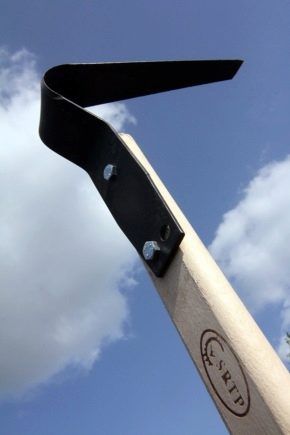
The flat cutter is a popular agricultural tool and is in high demand among owners of personal plots and summer cottages. Its demand is due to its versatility and the ability to replace a number of hand tools, and sometimes a cultivator. Having a flat cutter available, you can do without such common agricultural tools as scythes, pitchforks, rakes, picks, plows and shovels.
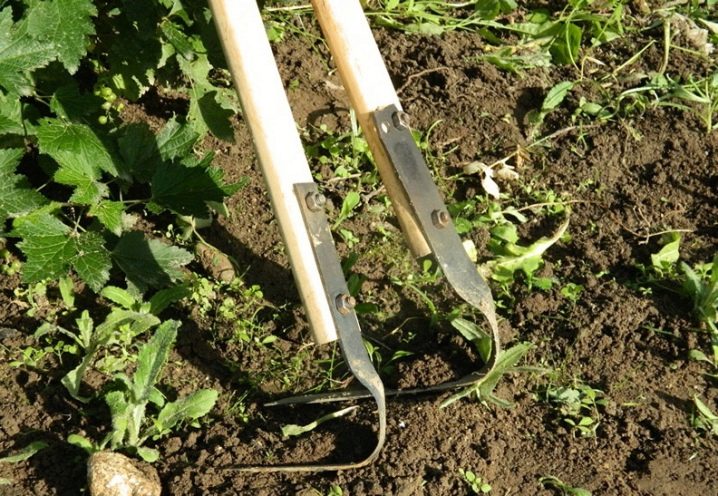
What it is?
The plane cutter was invented and patented by an outstanding and versatile person, a talented journalist, engineer and gardener Vladimir Vasilyevich Fokin from the city of Sudogda, Vladimir region. The idea of creating a tool came to him after a heart attack, as a result of which full-fledged work in the garden was out of the question. The author began to study the behavior of hand-held agricultural tools in various conditions, and analyze their strengths and weaknesses. After a series of experiments with various variations Vladimir Vasilievich approached the creation of a device completely unique in its simplicity and efficiency, which was later called a flat cutter, and was successfully tested on its own personal plot. Today, the production of flat cutters is carried out by the workshop founded by Vladimir Vasilyevich, which is located in his homeland - in the city of Sudogda, and produces the best tool in Russia.
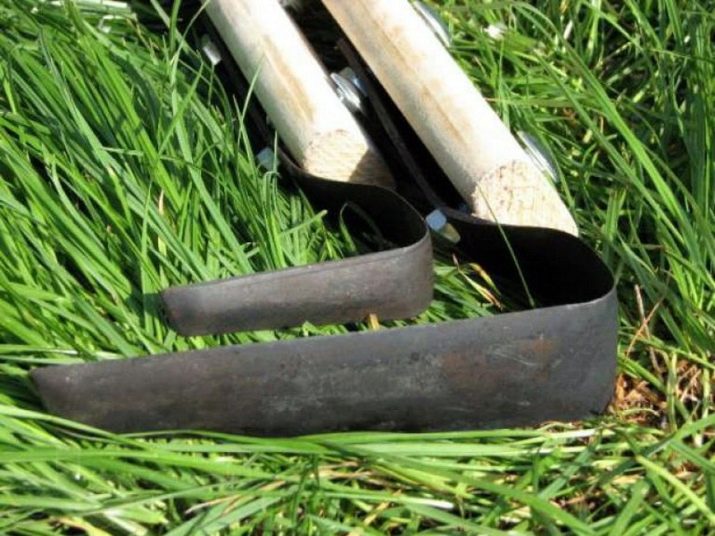
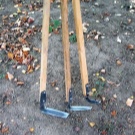
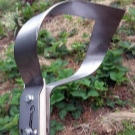
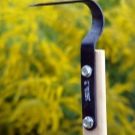

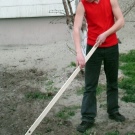
Structurally, the plane cutter is a curved metal bracket, fixed on a long handle, and outwardly resembles a poker. Each side is sharply sharpened, which significantly reduces soil resistance during operation and greatly facilitates manual labor. There are also combined models, consisting of two blades of different lengths. The secret of the effectiveness of the tool lies in the combination of its geometric shapes with the magnitude of the angles on the bends of the structure. This allows for flat cutting of the soil without sinking too deep into it. From the side, the work with a flat cutter looks like a broom sweeping snow in both directions, which is due to the double-edged blade of the tool and the ability to perform manipulations in either direction.


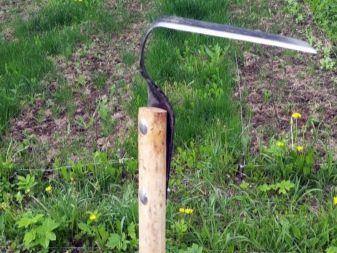
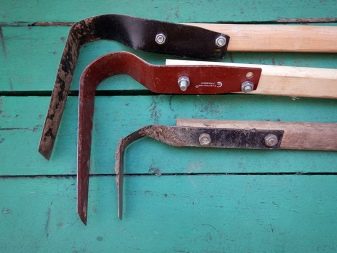
What is it needed for?
Using this unique tool allows you to perform up to 20 different manipulations, among which there are both the simplest operations and complex agricultural techniques.
- Weeding and loosening. Removing weeds with a flat cutter allows you not to violate the integrity of the upper fertile soil layer, but to cut the roots underground. Weeding is carried out with the wide side of the plane cutter, driving it into the ground a few centimeters and lightly cutting the top layer. This method of weeding has proven to be very effective, especially in the early stages of weed development.
- Formation of beds for carrots, beets, turnips and other root crops is also included in the list of works that can be performed with a flat cutter. However, a particularly valuable tool is the ability to huddle beans, corn and potatoes. Previously, this procedure was traditionally performed with a hoe or shovel, and has always belonged to the category of hard manual labor. But with the advent of the flat cutter, everything changed radically.Now hilling is done quickly and easily, most importantly, due to the special design of the tool, it does not injure the green part of the plants at all.
- Leveling the soil after plowing or deep loosening, as well as filling holes after planting any agricultural crops, the plane cutter can also do it. To do this, the structure is turned over and the soil is leveled by movements towards and away from itself.
- Thinning of plants. To slit densely growing crops, the tool is placed with a narrow edge on the garden bed and moved towards itself, deepening into the top layer of the earth by 5-7 cm.
- Breaking up large lumps after plowing or development of virgin lands, it is performed with the sharp end of a plane cutter, featuring high efficiency and speed of crushing.
- Weed removal with the help of a tool, it is done in two ways: by mowing or uprooting. When uprooting, the roots of the weed are cut and left in the ground to rot. Mowing involves cutting off only the upper part of the weeds, and does not imply the removal of rhizomes.

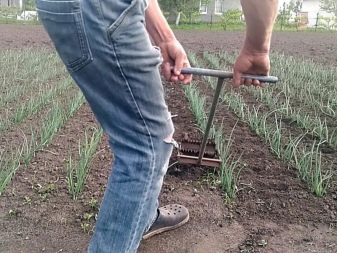
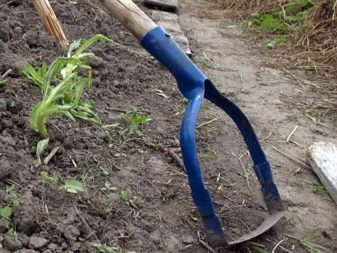
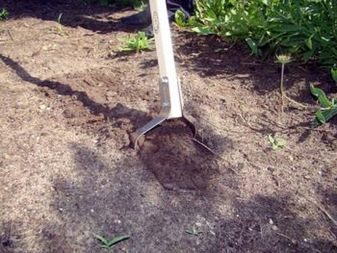
With the help of a flat cutter, you can not only loosen and huddle the soil, but also remove droppings in the chicken coop, trim the mustache of strawberries, turn over compost layers, scrape off bark from old trees, collect mowed grass and garbage from a summer cottage in heaps.
Advantages and disadvantages
A large number of approving reviews about the plane cutter and the unquenchable interest in it from summer residents are due to a number of indisputable advantages of this tool. With regular use of the flat cutter, soil fertility is significantly increased. This is due to the possibility of deep loosening, which, in turn, contributes to the normalization of air exchange and the establishment of an optimal water balance in the soil.
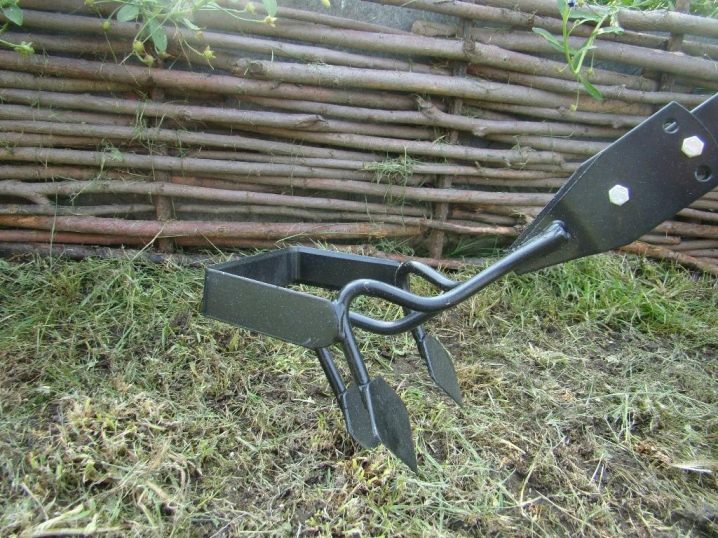
The plane cutter can be positioned as a popular anti-crisis tool that has a very low cost., does not require any maintenance and does not break. The advantages include the ability to change the angle of inclination of the metal blade, which allows you to very accurately adjust the tool for a particular type of agricultural work. Like any other tool, flat cutters also have disadvantages. These include the need for regular sharpening, the inability to process too large areas and low efficiency in the fight against densely growing tall weeds. However, some manufacturers have started to produce self-sharpening blades, which eliminates the need for frequent sharpening.
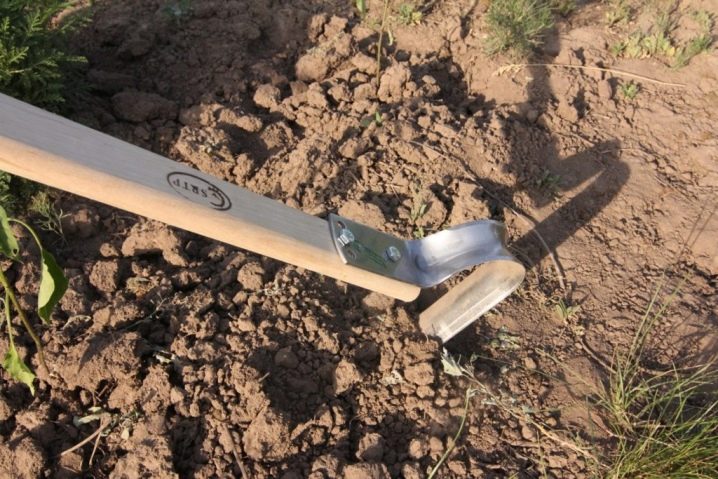
Views
Consideration of the varieties of flat cutters must begin with the samples developed and implemented by the main creator of this unique tool, V.V. Fokin.
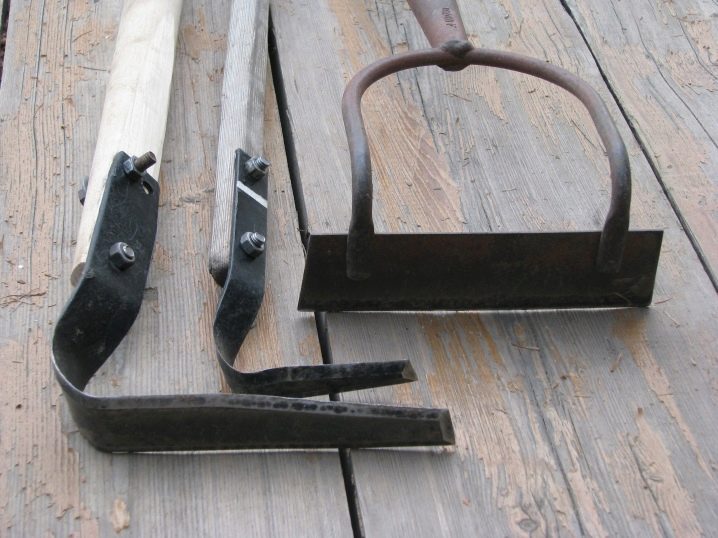
Fokina
Many experienced owners of gardens and summer cottages often acquire not one flat cutter, but several of its varieties at once. Tools differ in type of design, purpose and size. Officially, there are 6 modifications of the Fokin plane cutter, where each type specializes in performing one or another type of agricultural work.
- Large flat-cut subsoiler Fokine has a classic design, but it is equipped with an elongated blade, and can be attached to the handle in four ways. The tool is used mainly for the formation and preparation of beds in the spring, for loosening the soil to a depth of 15 cm and weeding. With the help of a large flat cutter, they huddle the near-stem circles of fruit trees, huddle potatoes, stir up and transfer hay, and even knead mortar.
- Small flat cutter Fokine exactly repeats the shape of the big "brother", but differs in more miniature dimensions and is used for delicate "jewelry" works. The device has proven itself well as a ripper and weeder, it is used for light soil cultivation in the aisles, removing strawberry whiskers and shallow weeding.The blade can be attached to the handle both left and right, which makes it accessible for both right-handed and left-handed people.
- "Krepysh" It is equipped with a shortened blade in comparison with the traditional model, and is used for the care of heavy sagging soils and virgin lands. Thanks to the short knife, the tool is very easy to work, which is why it has become especially popular with the elderly.
- "The Mighty Man" is a wide-cutting flat cutter designed for high hilling of potatoes, cabbage and onions, as well as for arranging high beds.
- "Big canvas" equipped with narrower and longer knives, used for weeding large vegetable gardens. At the same time, the working depth is not very large and is only 3 cm.
- "Small canvas" has an even narrower cutting surface and is intended for the formation of holes and weeding of row spacings.
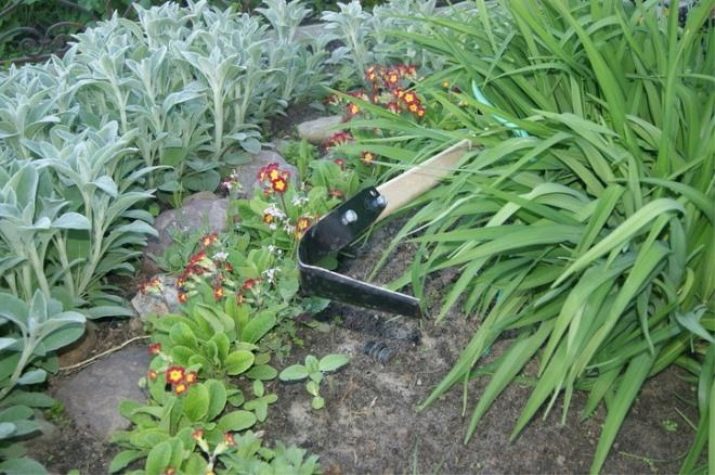
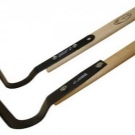
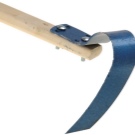
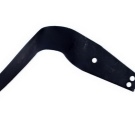
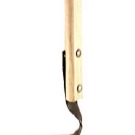
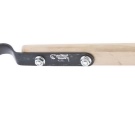
Due to their high quality and ease of use, Fokin flat cutters are quite a popular tool. This led to the appearance on the market of a large number of counterfeits, characterized by lower quality and a violation of the geometry of the cutting elements. Therefore, when buying a flat cutter, you need to pay attention to a number of points. First of all, the handle of a real Fokine plane cutter is never painted, and the blade is always black. It is always well honed and slightly bouncy when pressed. On the original knives there is always an imprint in the form of the letter "F" and a branded sticker "From Fokin". A fake is also given out by low-quality metal, which, with minimal impact, bends in different directions. In addition, such copies often come without sharpening and do not have a logo.
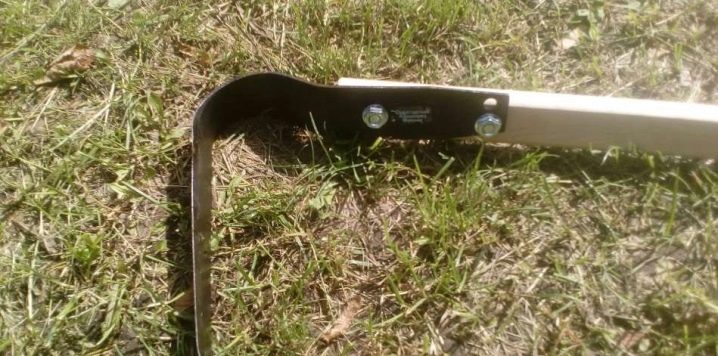
Zholobova
In addition to V.V.Fokin, other specialists also worked on the creation of a convenient and reliable tool. Among them should be noted the candidate of economic sciences Alexander Fedorovich Zholobov. The tool he created is equipped with a special handle - a steering wheel, which allows to halve the load on the worker's hands. The flat cutter is designed in such a way that it is enough for a person to just walk across the field and push the device in front of him like a baby carriage. In this case, work is performed in a straightened position, without bending the back or tilting.

The blades on such flat cutters can be both straight and oval. The first ones are designed for working with loose and light soils, and the second ones - for working on heavy soils. The cutting width of the blade varies depending on the model and can be 8-35 cm. Zholobov's flat cutters are distinguished by their high productivity, and thanks to the improved handle design, they can be used when processing fairly large areas. The tool is capable of performing all types of agrotechnical measures inherent in this tool, including hilling, loosening, weeding, bed formation, thinning and crevice.
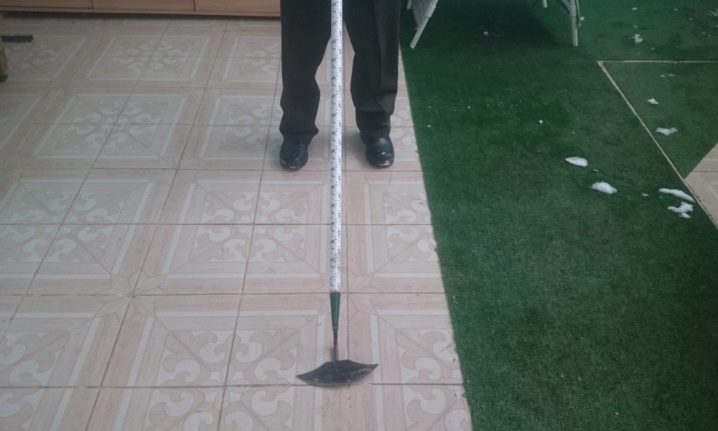
Mazneva
The tool was developed and introduced into production relatively recently. Unlike Fokin's flat cutters, it is equipped with a "mustache" to which sharp rectangular knives are attached. The handle of the device is quite long, which allows it to be used at any height. The main purpose of the tool is to level the ground and distribute fertilizers.
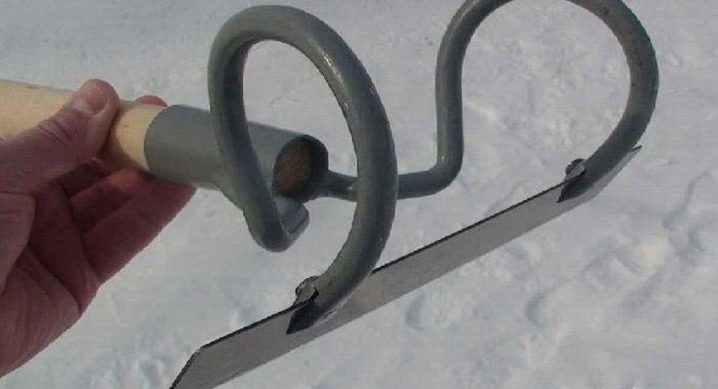
V.V.Fokin's invention quickly gained popularity and was embodied in a large number of new models, of which there are more and more every year. There have even appeared devices equipped with a wheel attached to the handle with a clamp and jumpers. Among the wide variety of instruments, a number of the most popular samples can be distinguished. So, the model "Hydra" is distinguished by a rounded blade and a reinforced wide toe. The stalk is made of birch and has a square section.
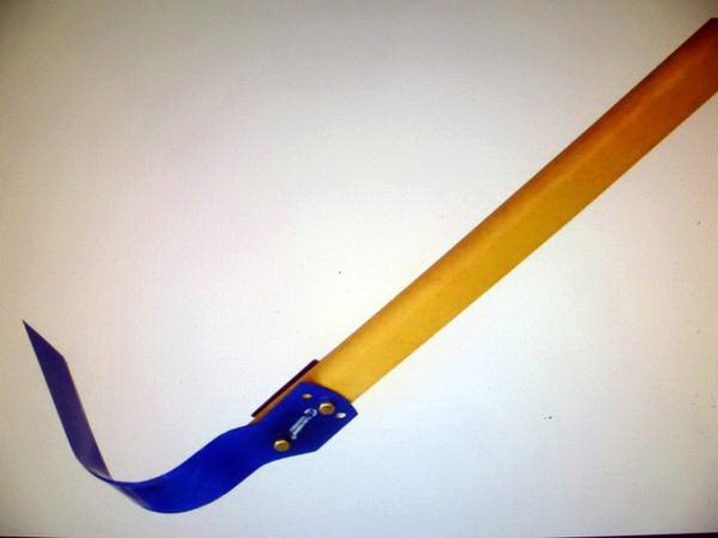
The Aist device is equipped with a beak-like blade, which makes the ground passing through it softer and more porous.The "Pyshka" model, like the "Sudogodsky Crab", is distinguished by its low weight and is intended for deep tillage. Kuzmich has a laser-hardened steel blade and is used for work in confined spaces. The Dutch flat-cutting shovel "Genius", produced by the company DeWitTools, is of great interest. The tool has 4 pointed edges and is used for cutting and removing sod, loosening soil and removing weeds.

How to use?
When working with a flat cutter, you should follow a number of simple recommendations:
- the blade should be immersed in the ground only to a shallow depth and move in a horizontal direction;
- when forming ridges or hilling them, the cutting element should be held perpendicular to the surface of the earth;
- it is advisable to work in a straightened position, leaning forward slightly, adjusting the position of the blade as needed;
- if the knife is buried in the ground, it should be fixed on the handle in the position of maximum inclination;
- to remove large weeds, the narrow part of the knife is stuck into the ground and the stem is dug out like a shovel.
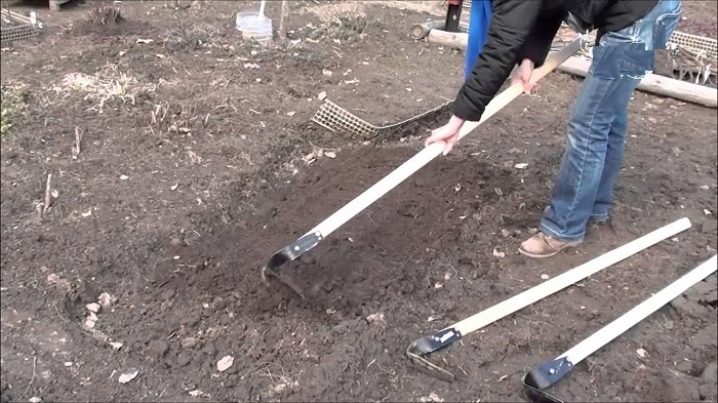
Care
You can sharpen the blade of the flat cutter yourself. To do this, you need to adhere to the sharpening angle that was formed by the manufacturer. You should not sharpen it too much or, on the contrary, make it too blunt. The optimal sharpening angle is 45 degrees. Often only one of the sides needs sharpening, so it is advisable to simply remove the burrs from the other. To do this, you need to walk on it with a file or a sharpening bar. When using disc electric emery, it is necessary to use minimal force, avoiding strong heating of the metal. For the winter, the cutting elements are treated with any anti-corrosion compound and placed in a dry room.
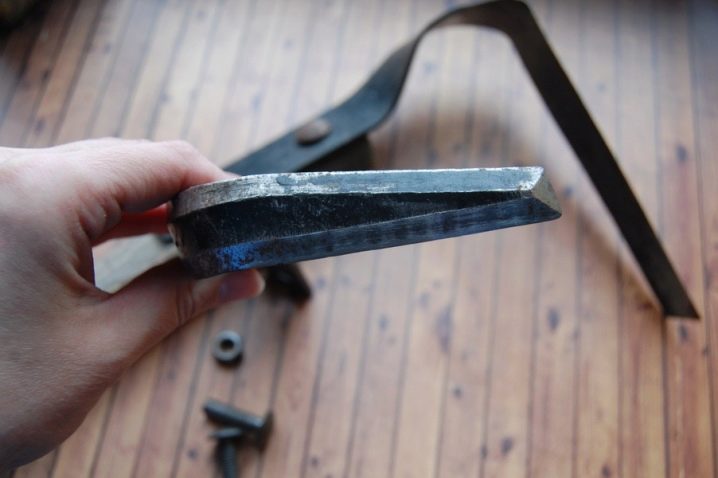
For information on how to use the flat cutter correctly, see the next video.













The comment was sent successfully.